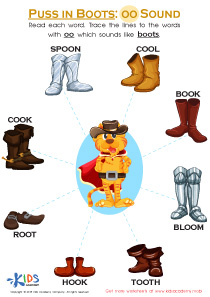Normal Silent Vowels Worksheets for Ages 6-8
5 filtered results
-
From - To
Boost your child's reading skills with our "Normal Silent Vowels Worksheets for Ages 6-8." Designed to help young learners understand tricky silent vowels, these engaging worksheets make mastering foundational phonics fun and easy. Each worksheet features playful activities that highlight silent vowel patterns, helping children improve their reading fluency and spelling accuracy. Ideal for both classroom use and at-home practice, our resources cater to various learning styles, ensuring every child can succeed. Turn silent letters into loud skills with our expertly crafted worksheets, designed to guide your child on the path to literacy success.
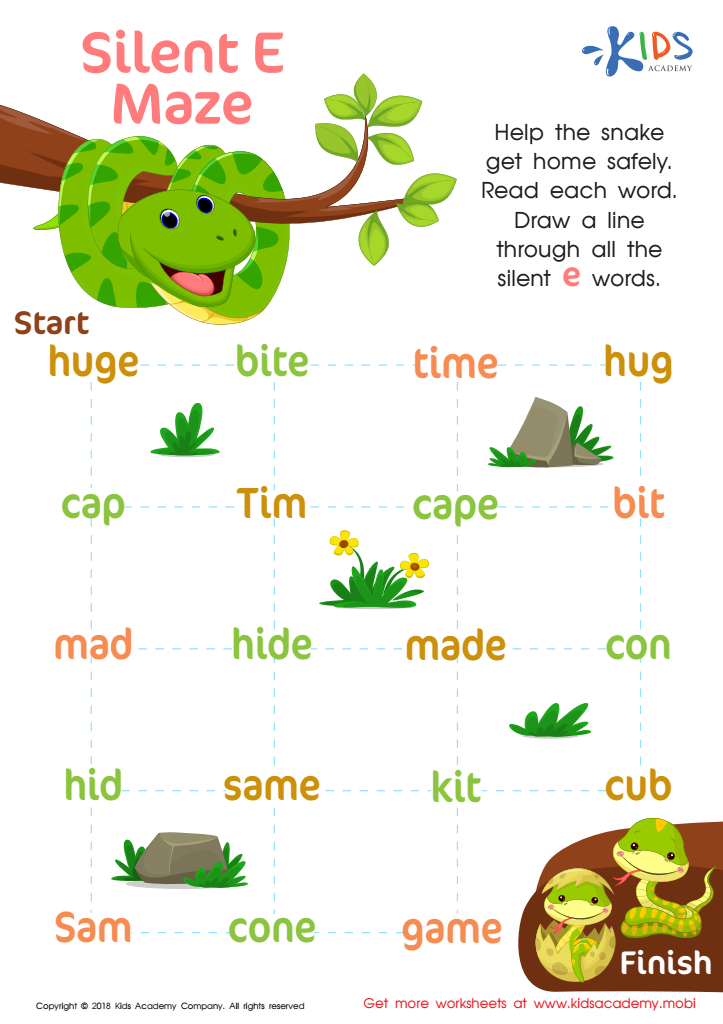

Silent E Maze Worksheet
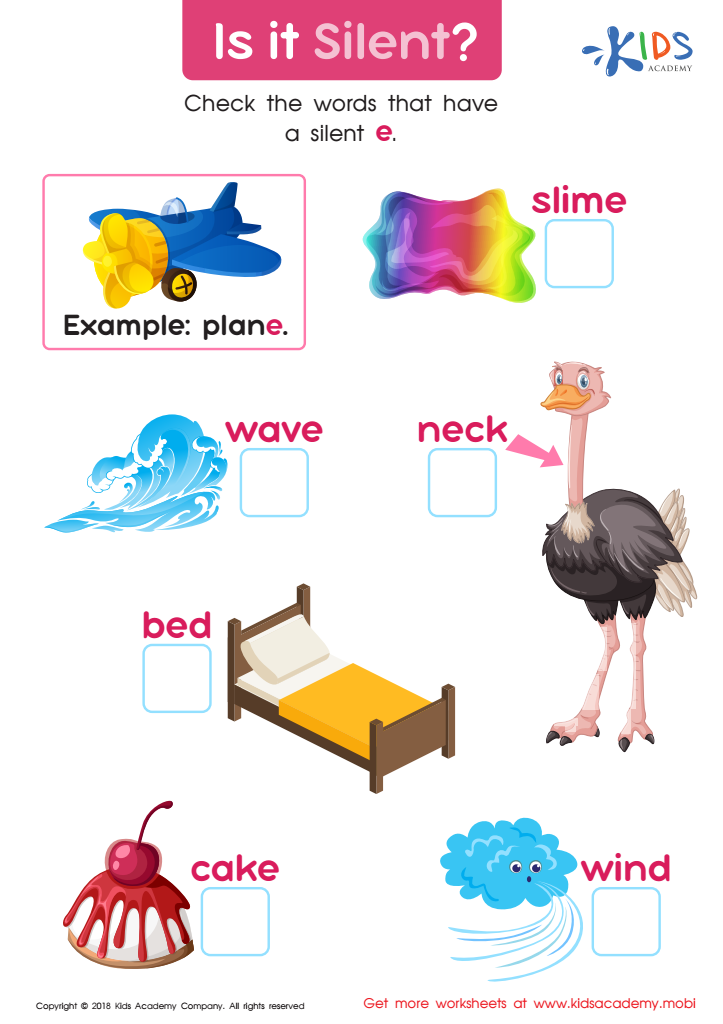

Is It Silent? Worksheet


Silent E Sentences Worksheet
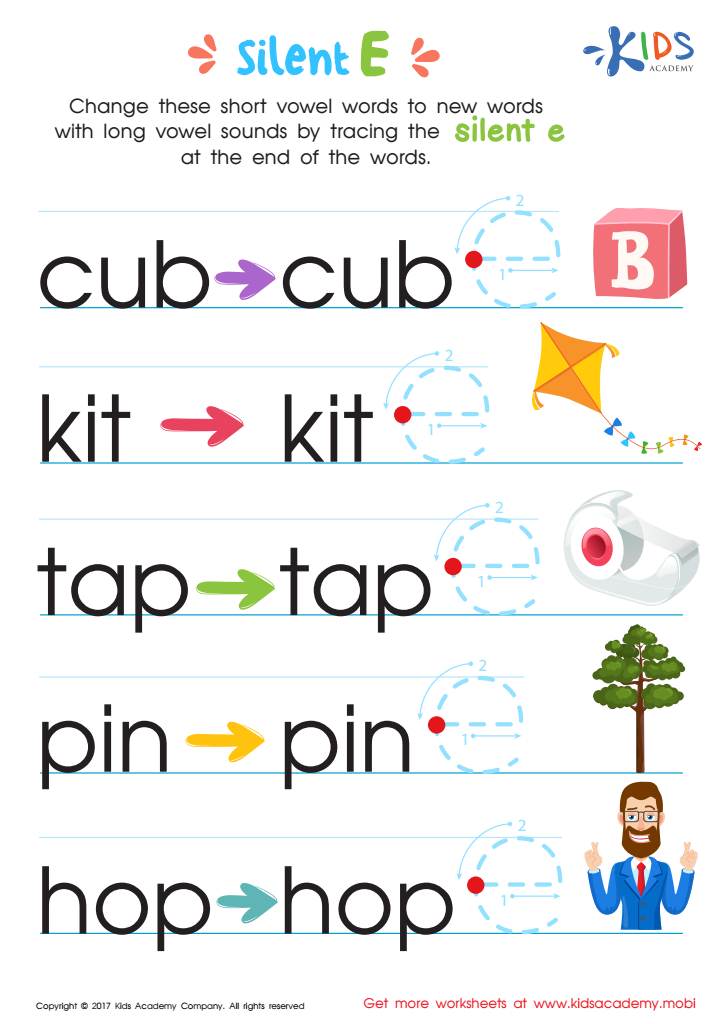

Silent E Words Worksheet
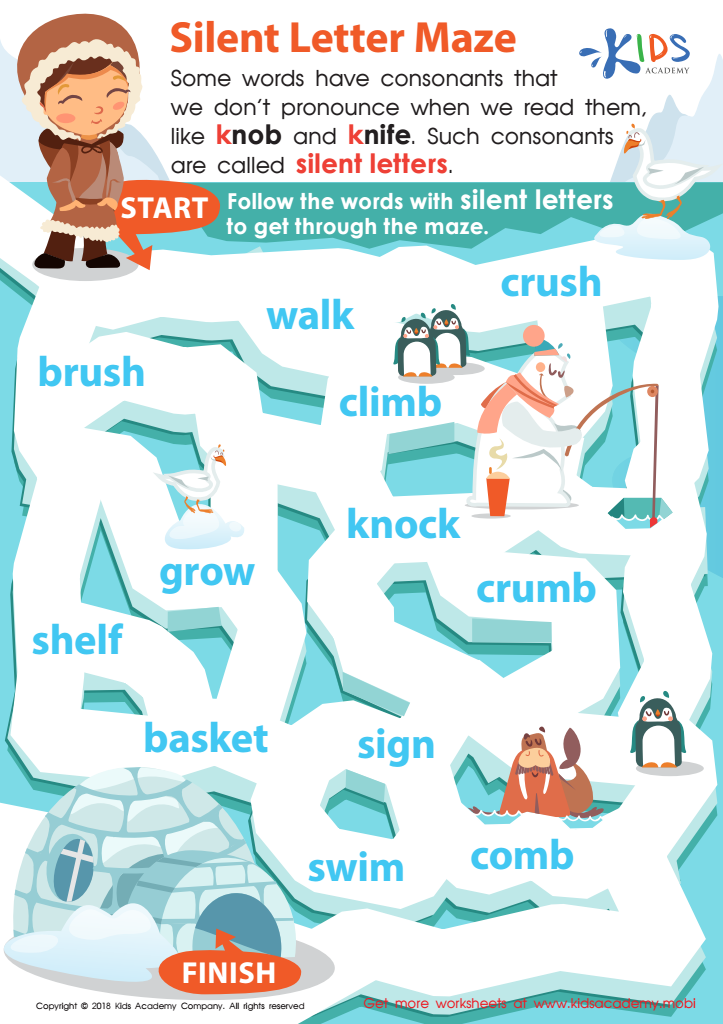

Silent Letter Maze Worksheet
Normal Silent Vowels (NSVs) are letters that appear in words but are not pronounced. Understanding NSVs is crucial for young learners aged 6-8 because it significantly enhances their reading and spelling skills. At this critical age, children transition from learning to read to reading to learn. Mastering the concept of NSVs helps them tackle more complex words with greater ease. It also boosts their confidence, as they can decode new words more accurately.
For parents and teachers, emphasizing NSVs can make a substantial difference in a child’s literacy development. Many English words contain silent vowels, such as the "e" in "cake" or "a" in "bread." Recognizing these silent letters helps children understand why words are spelled the way they are, making memorization simpler. Over time, this awareness leads to improved reading fluency and spelling accuracy.
Moreover, early identification and practice with NSVs can prevent future reading difficulties. Children who struggle with these concepts might find reading laborious and frustrating, potentially hampering their overall academic progress. By incorporating NSVs into early literacy education, parents and teachers provide foundational skills that support lifelong learning, making reading a more enjoyable and successful experience for young students.

 Assign to My Students
Assign to My Students










